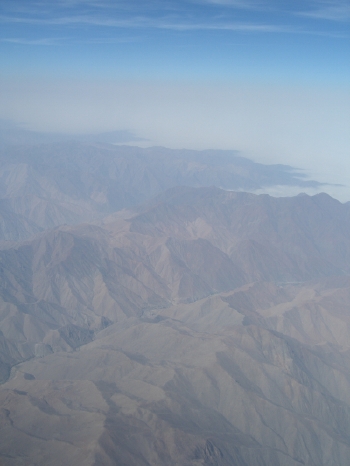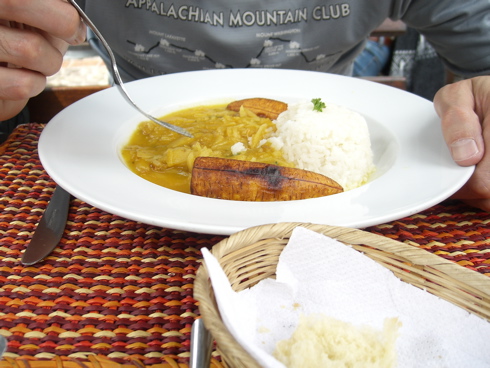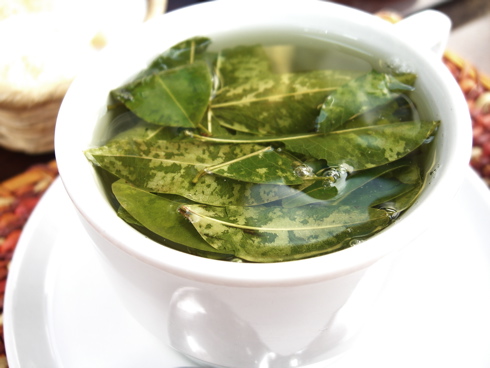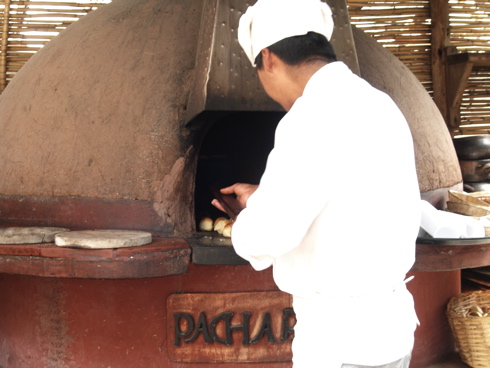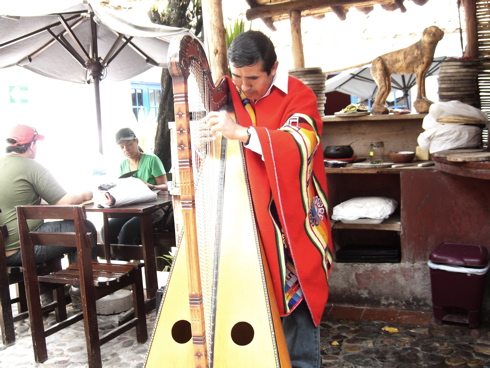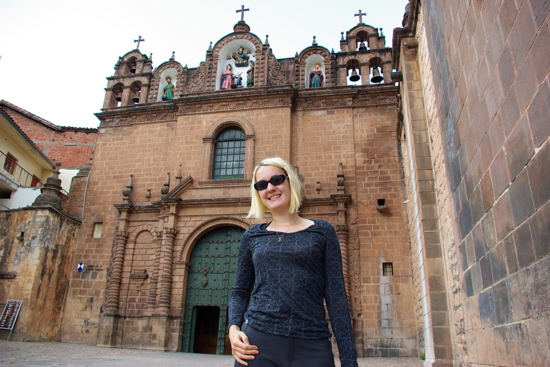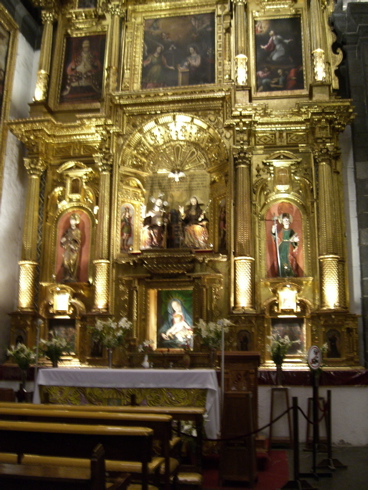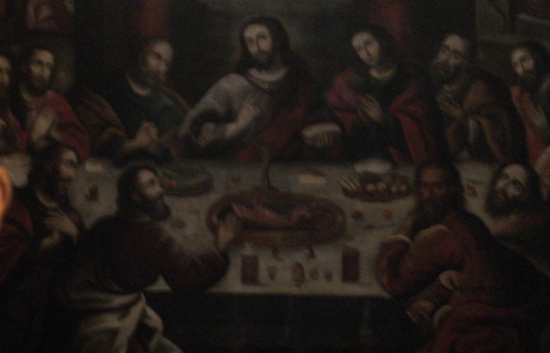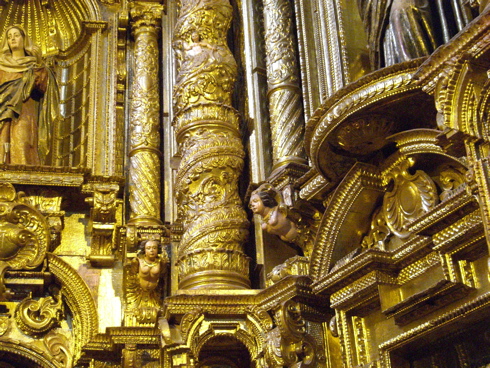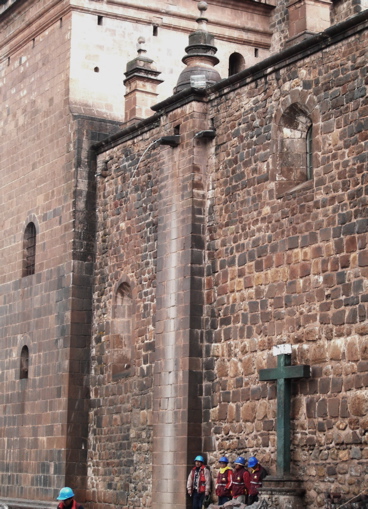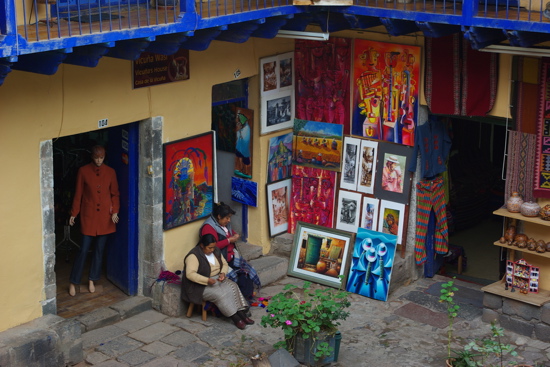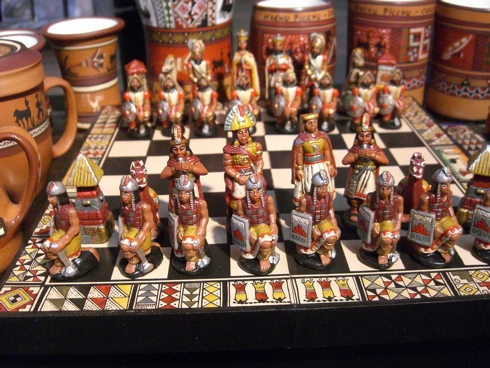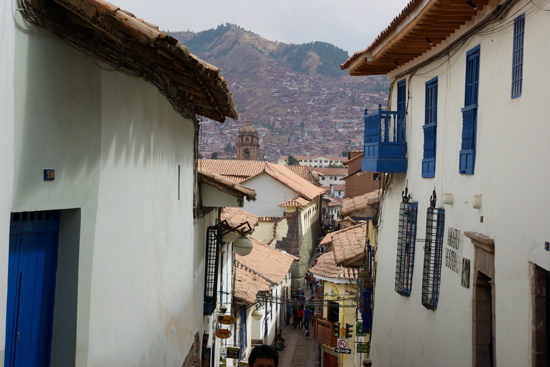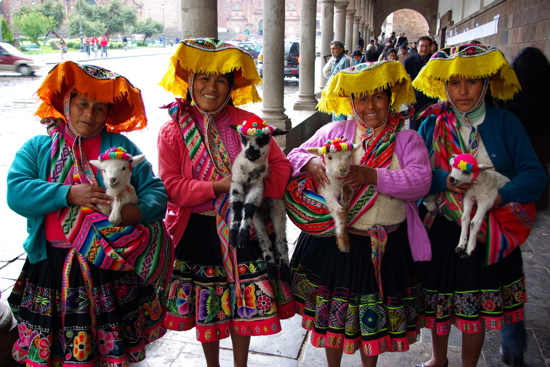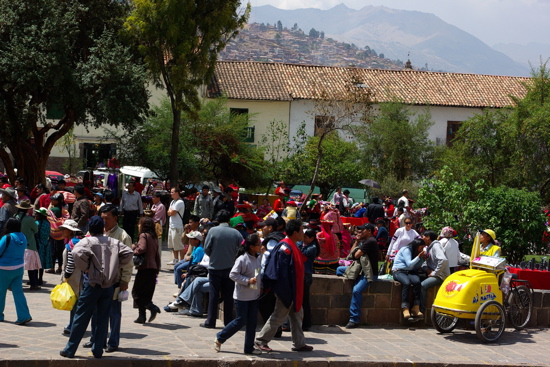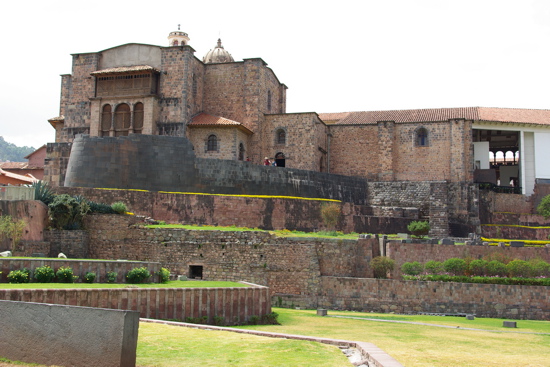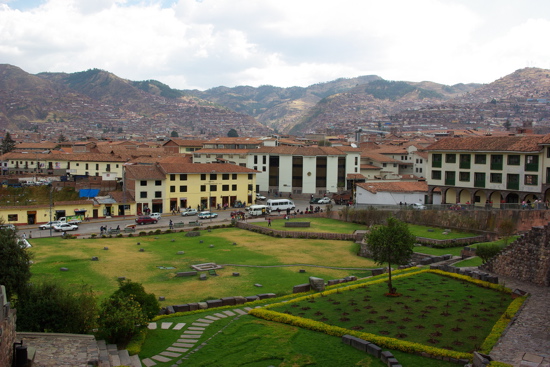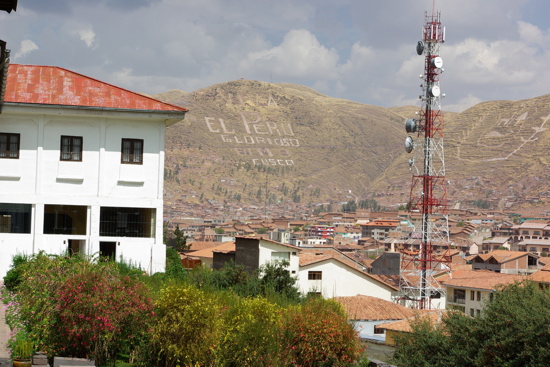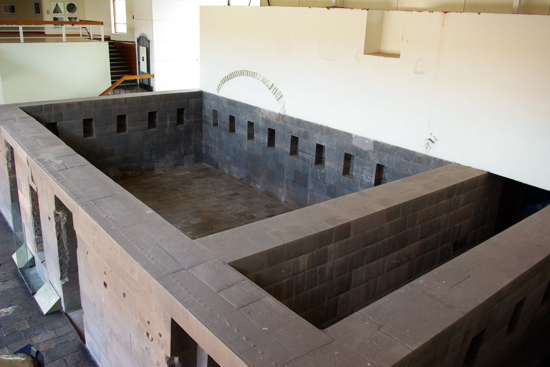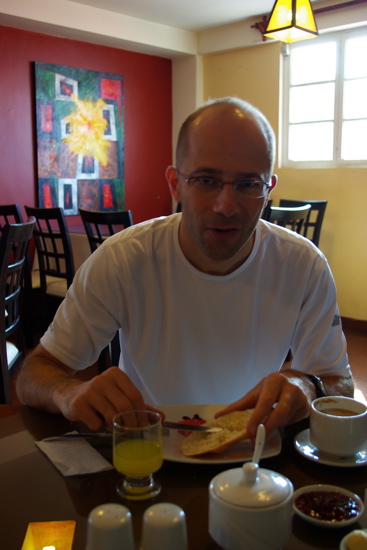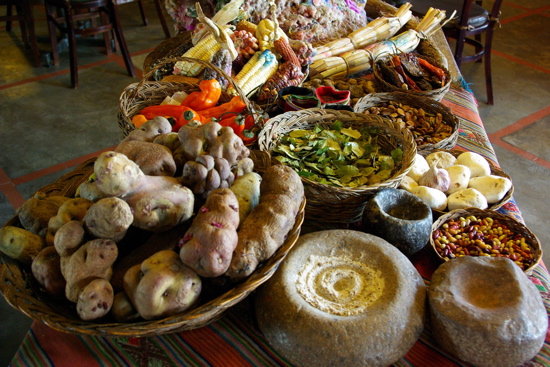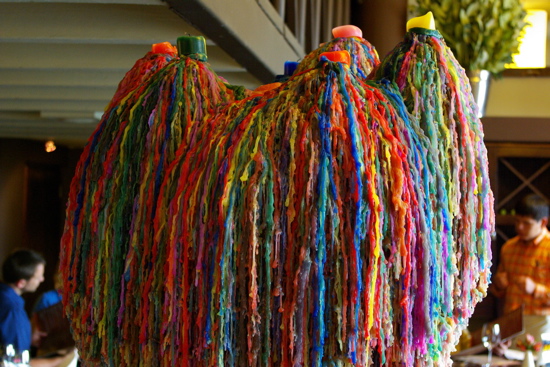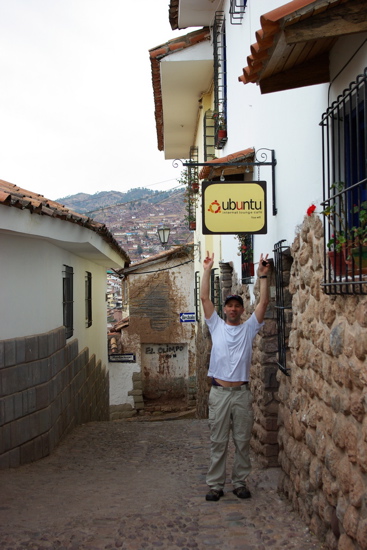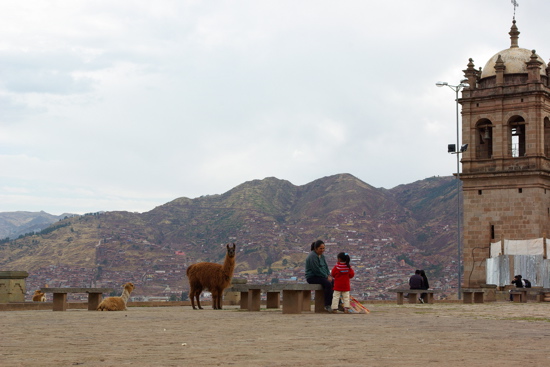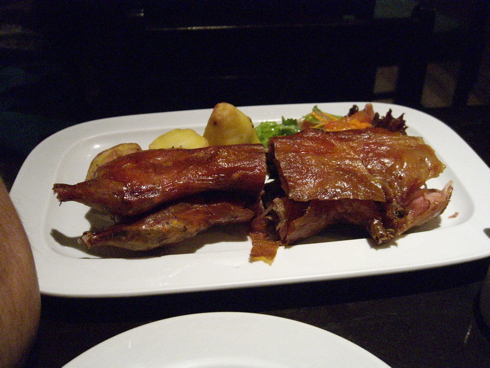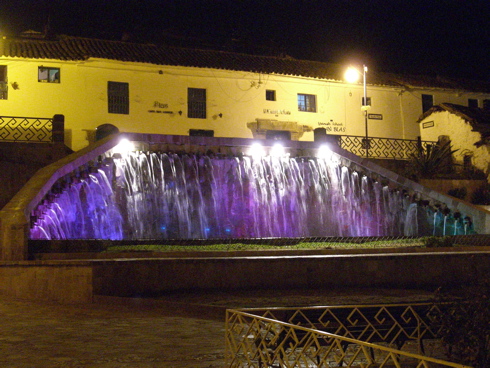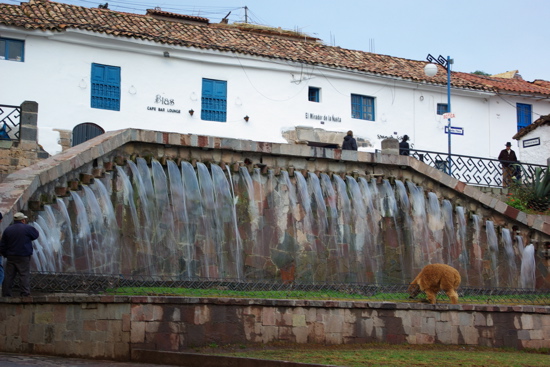Our trip to Peru started with three days in Cusco, the typical pit stop for Machu Picchu trekkers who must acclimate their circulatory systems to the altitude (3400 meters, or 11200 feet). The city of Cusco was the center of the Incan empire — in fact, the name comes from the Quechuan word meaning “navel.”
We left Boston on Thursday night and flew to JFK Airport, where we enjoyed a three-hour layover before boarding the 11:45pm red-eye to Lima. I almost achieved sleep, really I was so close, but just when my mind began to drift into the realm of unconsciousness the smell of indeterminate food jerked me back into reality. “Dinner at midnight, are you kidding me?” I muttered as Mr. P feasted on pasta with creamy bacon sauce.
Our Lima-to-Cusco plane was delayed due to apparently grave maintenance concerns. For over two hours, us passengers peered out the large window at roughly a dozen men in overalls and reflective safety vests who stared, poked, and occasionally jeered at the jet engine on the left wing. This sight stayed lodged in my mind as we flew over the majestic, jagged Andes en route to Cusco:
The airport at Cusco was chaotic, with merchants jostling for the attention of the tourists. Our hotel promised to send a driver but we didn’t see our names on any of the placards. An official “taxi manager” intervened and called our hotel to inquire. He told us that the hotel said we should take a cab, so we got in a taxi and agreed to pay 20 soles (about $7 USD). About halfway there, I began to fear that we were being kidnapped and cursed myself for not talking directly to the desk clerk. But we were delivered safely at our hotel, which was clean and adorned with the work of local artists.
Mr. P was famished, so we went out to lunch at Pachapapa, reputedly one of the best restaurants in Cusco. (That night, he would order an alpaca ceviche served with a salad, blantantly disobeying our travel medicine doctor’s orders against raw leafy greens. “But she didn’t say we couldn’t eat raw alpaca meat,” Mr. P pointed out.)
Me, I was frantically downing Mate de Coca tea, which is said to alleviate altitude sickness. (Actually, the locals say it cures everything — except insomnia). Yes, this is what they make cocaine from, but only by using lots of coca leaves and more than a few chemicals.
Like many restaurants in Peru, Pachapapa serves wood-fire-baked bread and pizza. Not even I can resist…
As we ate, a man started playing the Andean harp. I was very charmed by this, though I soon realized that it is impossible to eat a meal in Cusco without a local musician clambering to serenade you (and sell you their CDs). At least the harpist was relatively mellow and didn’t sing.
Once we were fed, we headed to Cusco’s Cathedral of Santo Domingo, which is just as breathtaking as some large European cathedrals I have seen.
Pictures aren’t allowed inside but I couldn’t resist taking a secret photo of one of the breathtaking 24-carat gold altars.
In an attempt to convert more Quechuans to Catholicism, the Spaniards infused traditional Christian religious imagery with local themes. The artwork featured llamas instead of horses, fertility symbols, mirrors, and Inca motifs. The most famous example of this localization is the painting of “The Last Supper,” in which Jesus and the disciples are preparing to chow down on a guinea pig:
Along these same lines, we visited a Jesuit’s church the next day and saw naked bosoms on the wall. This ain’t your Pope’s Catholicism!
As we were leaving the Cathedral of Santo Domingo, it began to pour rain. It wasn’t the last time we’d see rain in Peru during the so-called dry season. Perhaps the rain was my punishment for taking photos in church.
For the next day and a half, we meandered through Cusco.
We toured the tourist markets.
I loved the chess sets that pitted the Incas against the Spaniards, although to actually play a game of chess with this colorful set would induce a headache.
We got some training for the Inca trail on Cusco’s steep narrow streets.
We paid women carrying baby lambs (llamas?) 1 neuvo sole (about .35 cents) each to take their picture. I couldn’t resist — the baby lambs (llamas?) were so cute. Immediately after Mr. P took this picture, the woman on the far right took off after another tourist who took a picture and walked away without paying. This woman was fierce.
Of course, real modern-day Peruvians wear jeans and baseball caps and don’t carry around livestock.
We went to the Koricancha (Temple of the Sun), an old Incan palace that the Spanish practically leveled to turn into yet another church.
We enjoyed our hotel. For $50 USD/night, we were treated like royalty, given unlimited mate de coca tea, and given a very nice breakfast every morning:
We had lunch at the Inka Grill, another noted restaurant in Cusco. The food was just okay but I really liked the display of traditional Peruvian produce:
And the huge vase covered in candle wax:
After lunch, we went for another training walk in the high streets of Cusco. Mr. P found an internet cafe called Ubuntu, which is his favorite flavor of Linux.
In a church plaza, we observed a family hanging out with their alpacas.
We ate a roasted guinea pig — cuy, it’s called, a very common and traditional dish. The crispy skin is reminiscent of duck, and the scanty bits of meat are sorta rabbity and porky. (I read in a tourist book that restaurants serve cuy intact because apparently unscrupulous cooks used to serve cat parts to unsuspecting tourists).
When we walked back at night, the fountain at San Blas was all lit up:
How romantic — Peru is for lovers! Not five hours earlier, this is how the fountain looked, replete with grazing alpaca:
Our third day in Cusco, we booked a tour of the Sacred Valley. To be continued…
